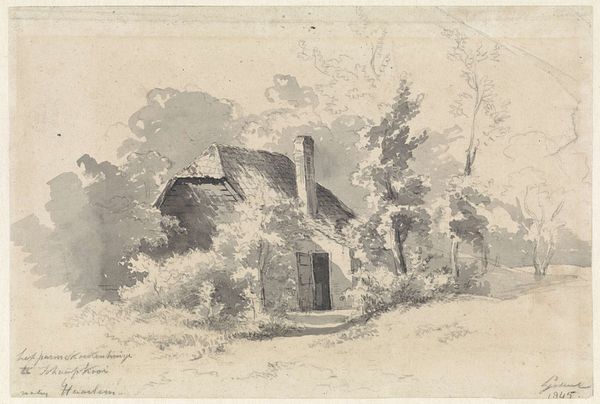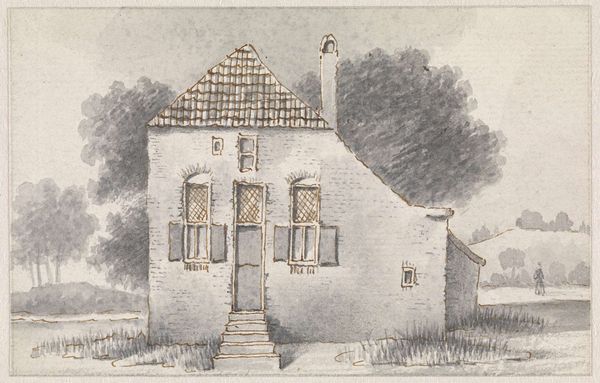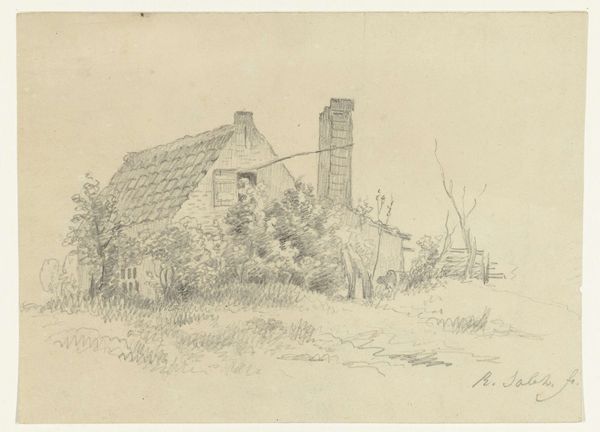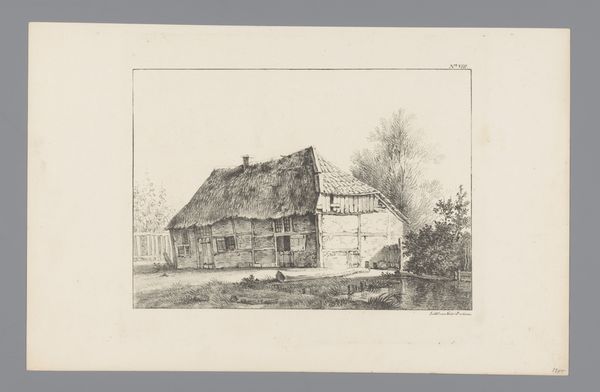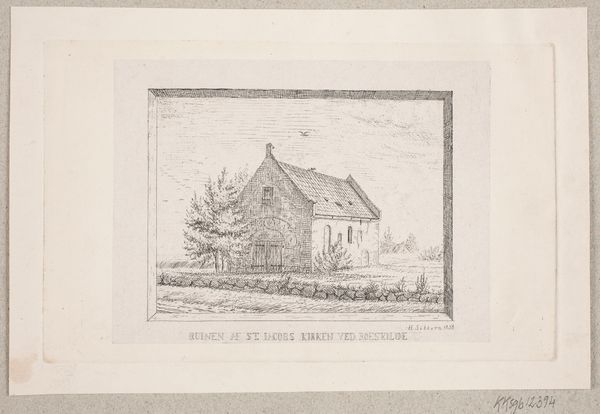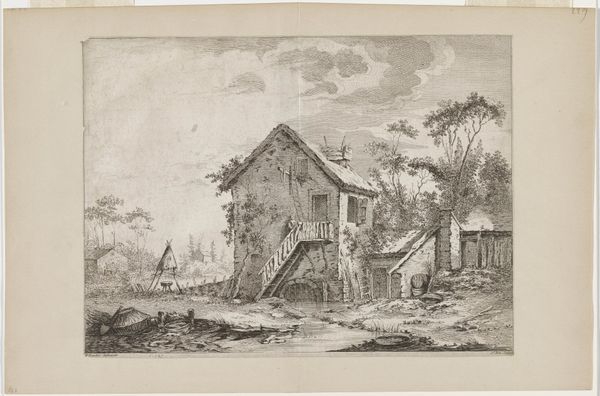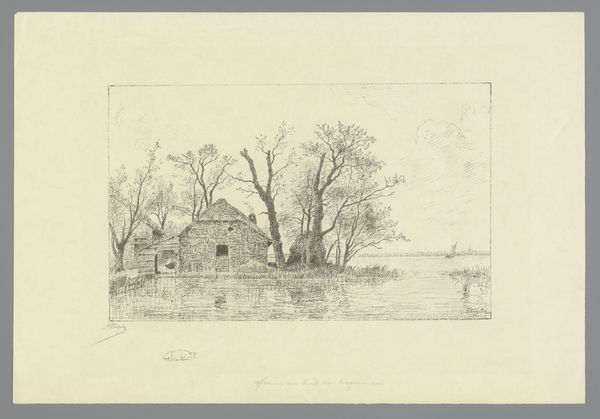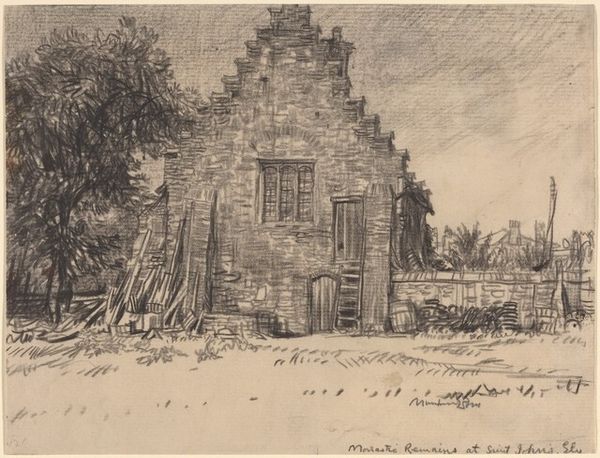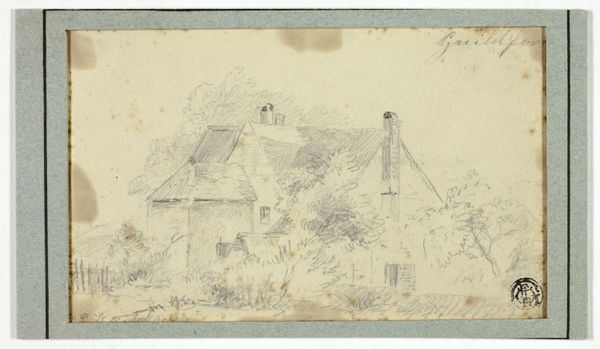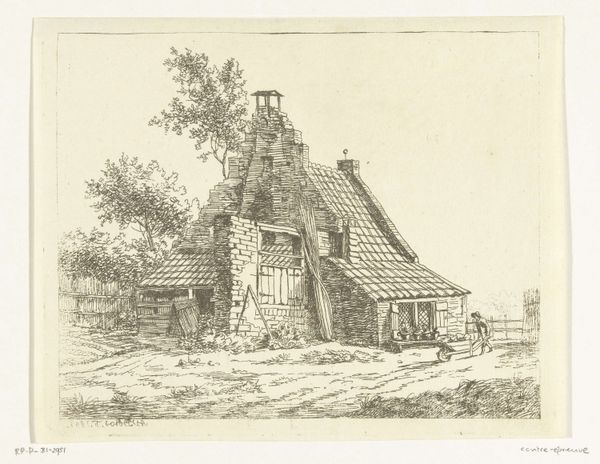
drawing, paper, ink
#
drawing
#
dutch-golden-age
#
landscape
#
paper
#
ink
#
cityscape
#
realism
Dimensions: height 125 mm, width 127 mm
Copyright: Rijks Museum: Open Domain
Editor: This ink drawing on paper is entitled "Hoge huis te Zoelmond, in de Betuwe", made sometime between 1812 and 1859 by Evert Doublet. It feels so still and quiet, almost ghostly, and I'm struck by the peculiar proportions of the house itself. What catches your eye when you look at it? Curator: Oh, that stillness. It whispers stories, doesn’t it? The scene has this beautifully haunting quality that really gets under your skin. The artist teases us with a simple moment frozen in time: a Dutch house by a lonely field. What did Doublet feel as he put his ink to paper? Was it a portrait of solitude or simple, domestic pride? There's something quietly profound in the mundane, wouldn't you say? Editor: Absolutely. It makes you wonder about the person standing in the doorway too. The house feels solid, but the overall scene also seems quite fragile, if that makes sense? Curator: Fragility, yes! The Dutch Golden Age saw the rise of realism, yes, but also a penchant for quiet contemplation. There’s a raw vulnerability that cuts through this calm scene, don’t you think? We romanticize the Dutch Golden Age for its pomp and innovation. But Doublet shows us a corner of stillness and a sense of human resilience within the quiet moments of everyday life. Editor: That's a lovely way to put it – the human resilience in the quiet moments. It adds a whole new layer to my understanding of the artwork. Thanks! Curator: My pleasure. Art is at its finest when we allow it to be our mirror. I think Doublet wanted to be reminded that true meaning comes in both dramatic bursts of creativity but also subtle scenes of silent perseverance.
Comments
No comments
Be the first to comment and join the conversation on the ultimate creative platform.

